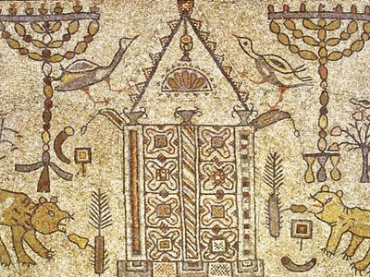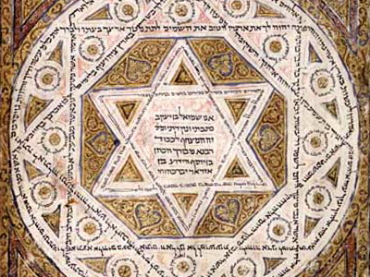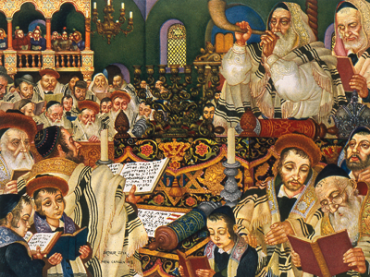Jewish Studies
Jewish Studies is an interdisciplinary field studying Jews and Judaism in all of their geographical, cultural, social, economic, historical, political, religious, and linguistic contexts, from Late Antiquity through the modern period. The Judaism in Context series features monographs and edited collections that traverse the wide landscape of Jewish Studies.
Muslims, Jews and Pagans
Studies on Early Islamic Medina
Series: Gorgias Islamic Studies 9
ISBN: 978-1-4632-0664-2
Muslims, Jews and Pagans examines in much detail the available source material on the 'Āliya area south of Medina on the eve of Islam and at the time of the Prophet Muḥammad. It provides part of the necessary background for the study of the Prophet's history by utilizing in addition to the Prophet's biographies, various texts about the history, geography and inhabitants of this area.
$78.00
Perspectives on Hebrew Scriptures X
Comprising the Contents of Journal of Hebrew Scriptures, vol. 13
Edited by Christophe Nihan & Ehud Ben Zvi
ISBN: 978-1-4632-0691-8
This volume incorporates all the articles and reviews published in volume 13 (2013) of the Journal of Hebrew Scriptures.
$251.00
Thesaurus of Mediaeval Hebrew Poetry (Volume 1)
By Israel Davidson; Introduction by Michael Rand
Series: Kiraz Jewish Studies Archive 7
ISBN: 978-1-4632-0697-0
This multi-volume work is a reprint of Israel Davidson’s classic opus, with a new introduction by piyyut scholar Michael Rand.
$203.00
Thesaurus of Mediaeval Hebrew Poetry (Volume 2)
By Israel Davidson; Introduction by Michael Rand
Series: Kiraz Jewish Studies Archive 7
ISBN: 978-1-4632-0698-7
This multi-volume work is a reprint of Israel Davidson’s classic opus, with a new introduction by piyyut scholar Michael Rand.
$203.00
Thesaurus of Mediaeval Hebrew Poetry (Volume 3)
By Israel Davidson; Introduction by Michael Rand
Series: Kiraz Jewish Studies Archive 7
ISBN: 978-1-4632-0699-4
This multi-volume work is a reprint of Israel Davidson’s classic opus, with a new introduction by piyyut scholar Michael Rand.
$203.00
Thesaurus of Mediaeval Hebrew Poetry (Volume 4)
By Israel Davidson; Introduction by Michael Rand
Series: Kiraz Jewish Studies Archive 7
ISBN: 978-1-4632-0700-7
This multi-volume work is a reprint of Israel Davidson’s classic opus, with a new introduction by piyyut scholar Michael Rand.
$203.00
Women in Drag
Gender and Performance in the Hebrew Bible and Early Jewish Literature
Series: Biblical Intersections 16
ISBN: 978-1-4632-0716-8
From Jael’s tent peg to Judith’s sword, biblical interpreters have long recognized the power of the "lethal women" stories of the Hebrew Bible and related literature. The tales of Jael and Judith, female characters who assassinate enemy commanders, have fascinated artists, writers, and scholars for centuries, no doubt partly because of the gender of the characters doing the killing. Tamber-Rosenau presents the first systematic study, both text-centered and deeply engaged with a variety of queer-theoretical frameworks, of the motif of the woman-turned-warrior in ancient Jewish literature. Through analysis from queer-theoretical perspectives and comparison with Ancient Near Eastern and Greco-Roman literature, Women in Drag shines new light on three strong female characters from the Hebrew Bible and the early days of Jewish literature.
$114.95
Jewish Cultural Elements in the Ethiopian Orthodox Täwaḥədo Church
Series: Gorgias Eastern Christian Studies 55
ISBN: 978-1-4632-0717-5
This monograph traces how ‘Jewish’ elements were introduced into and disseminated throughout the Ethiopian Orthodox Täwaḥədo Church through a series of multi-layered, socio-politico-cultural processes. Drawing on historical and literary evidence, Afework tracks the incorporation of Jewish features into the Ethiopian Orthodox Church from pre-Aksumite Christianity, before the fourth century, through the sixteenth century.
$118.00
Progressive Approaches to Midrash
Proceedings of the Midrash Section, Society of Biblical Literature, Volume 7
Edited by W. David Nelson & Rivka Ulmer
Series: Judaism in Context 20
ISBN: 978-1-4632-0736-6
This volume contains selected proceedings of the Midrash Section sessions convened during the 2015-2016 meetings of the Society of Biblical Literature. It is comprised of contributions by both leading and emerging scholars of Midrash whose research shares a common focus on early and medieval rabbinic biblical interpretation. Additionally, the research on Midrash in this volume intersects with a range of related biblical texts, religious themes, and foundational and forward-thinking methodologies and interdisciplinary academic fields of study, including: Gender Studies; Classics; Jewish Studies; Religious Studies; Literary Studies; the Aqedah/Binding of Isaac; biblical parables; and, medieval rabbinic biblical commentary.
$127.00
Through the Prism of Wisdom
Elijah the Prophet as a Bearer of Wisdom in Rabbinic Literature
Series: Judaism in Context 23
ISBN: 978-1-4632-0742-7
This monograph explores the nature of the Elijah traditions in rabbinic literature and their connection to the wisdom tradition. By examining the diverse Elijah traditions in connection to the wisdom and apocalyptic traditions, Alouf-Aboody sheds new light on the manner in which Elijah’s role developed in rabbinic literature.
$178.00
Perspectives on Hebrew Scriptures XI
Comprising the Contents of Journal of Hebrew Scriptures, vol. 14
Edited by Christophe Nihan & Anna Angelini
ISBN: 978-1-4632-0749-6
This volume incorporates all the articles and reviews published in volume 14 (2014) of the Journal of Hebrew Scriptures.
$198.00
Jewish and Roman Law (volume 2)
A Comparative Study
By Boaz Cohen; Introduction by Natalie B. Dohrmann
Series: Judaism in Context 21
ISBN: 978-1-4632-0758-8
This work is volume 2 of Boaz Cohen’s collected articles, with a new introduction by rabbinics scholar Natalie B. Dohrmann.
$72.60
The Life of One Chosen by God
A Study of the Stories of Moses in Jewish, Christian and Muslim Sources
ISBN: 978-1-4632-3913-8
Moses is an inspirational prophetic figure in Jewish, Christian and Muslim religious traditions. This book journeys through the Abrahamic faiths and illustrates their respective depictions of the Moses’ stories. In exploring the differences and similarities between the Hebrew Bible, Jewish rabbinical commentaries, Syriac Christian exegesis and the Qur’an, this book seeks for a deeper understanding of the Prophet Moses in the religious history of humanity.
$155.00
Death and Afterlife in Ancient Jewish and Christian Literature
By Pau Figueras
Series: Gorgias Handbooks 41
ISBN: 978-1-4632-3919-0
This handbook explores beliefs of ancient Jews and Christians surrounding death and the afterlife through the lens of texts ranging from the Old Testament and New Testament, to Second Temple period and rabbinic literature, to early Christian writings. Figueras further brings together eschatological texts from Iran, Egypt, Greece, and Rome as comparanda, and provides context and bibliography to guide readers in their study of ancient Jewish and Christian views of death and the afterlife.
$78.65
The Hidden Pearl (vol. 2)
Vol. 2:
ISBN: 1-931956-99-5-2
Aramaic, the language of Jesus of Nazareth, was the lingua franca of the Middle East for over a thousand years before Arabic became widespread. This volume focuses on the Late Antiquity period and how Syriac Christianity emerges from Jewish Aramaic and the course of these two Aramaic traditions. The second part of this volume focuses on the Syriac tradition and its cultural role, the importance of Syriac scholars, and the spread of Syriac Christianity eastward in the first millennium AD. Includes both color and black and white illustrations.
$50.00
Second Slayings
The Binding of Isaac and the Formation of Jewish Memory
Series: Judaism in Context 24
ISBN: 978-1-4632-4026-4
In Second Slayings: The Binding of Isaac and the Formation of Jewish Memory, David N. Gottlieb explores the decisive - and, until now, under-appreciated - influence exerted on Jewish memory by the Akedah, the Binding of Isaac narrative in the Book of Genesis. Through the lenses of hermeneutics, literary and social theory, and history, Gottlieb reveals the ways in the Akedah narrative models the act of interpretation as a means of recovery from and commemoration of crisis - a strategy that has penetrated every aspect and era of Jewish life.
$114.95
She Opens Her Hand to the Poor
Gestures and Social Values in Proverbs
ISBN: 978-1-4632-4045-5
While scholarship on nonverbal communication in the Hebrew Bible has traditionally focused on ritual dress, postures of worship, and related topics, there exist a number of non-ritual gestures in the text for which we have little understanding, such as occur in the book of Proverbs. As the premier source for moral pedagogy in the Hebrew Bible, Proverbs contains a number of gestures that, when properly interpreted, enhance an understanding of social values in ancient Israel. To aid in the process of decoding these literary features, Jones examines Ugaritic, Akkadian, Egyptian, and Sumerian texts, identifying similar gestures and anatomical idioms and how they are variously interpreted in their respective contexts. Though the particular religious and cultural systems of these neighboring entities are distinct, their ideology of social values—values imbedded in the fabric of daily life and indicative of the universally shared experience of all communities—comes to the fore through the medium of gesture.
$114.95
Gender in Jewish Studies
Proceedings of the Sherman Conversations 2017
Edited by Katja Stuerzenhofecker & Renate Smithuis
ISBN: 978-1-4632-4056-1
Volume 13 of Melilah, an interdisciplinary electronic journal concerned with Jewish law, history, literature, religion, culture and thought in the ancient, medieval and modern eras.
$69.00
Torah is a Hidden Treasure
Proceedings of the Midrash Section, Society of Biblical Literature
Edited by W. David Nelson & Rivka Ulmer
Series: Judaism in Context 22
ISBN: 978-1-4632-4078-3
The chapters in Torah is a Hidden Treasure pertain to authorship in Seder Eliyahu Rabba and Pirqe deRabi Eliezer, natural law and Israel’s statutes, Masorah and midrash, as well as a definition of midrash. The Hebrew Bible and midrash is researched in the interpretation of Israelite tribes, the Ten Commandments and the Covenant Code, and in Rashbam’s Bible commentary and its exegetical devices.
$128.00
The Spinozian Challenge in Rav Kook's Writings
The Spinozian Challenge in Rav Kook's Writings
By Ehud Nahir
ISBN: 978-1-4632-4121-6
Nahir’s monograph examines the complex relationship of Rabbi Abraham Isaac Kook (Rav Kook) to the Spinozian challenge. Rav Kook’s writings adopt a pantheistic outlook while simultaneously innovating a new framework, which seeks to present a rationalist alternative to the pantheism of Spinoza that can also be reconciled with an Orthodox Jewish viewpoint.
$139.00 $111.20
Cultic Spiritualization
Religious Sacrifice in the Dead Sea Scrolls
ISBN: 978-1-4632-4241-1
Throughout the history of research on the Dead Sea Scrolls, the investigation of religious sacrifice has been neglected. This book examines the views of sacrifice in the non-biblical sectarian Dead Sea Scrolls, through exploration of the historical and ideological development of the movement related to the scrolls (the DSS movement), particularly from the vantagepoint of the movement's later offshoot group known as the Qumran community
$110.95
In and Around Maimonides
Original Essays
Series: Judaism in Context 25
ISBN: 978-1-4632-4330-2
In and Around Maimonides presents eight highly focused studies on Moses Maimonides and those around him.
$110.00
The Lord God of Gods
Divinity and Deification in Early Judaism
ISBN: 978-1-4632-4333-3j
The investigation of this book into early Jewish experiences of God begins with calls to discard any categorical and definitional approaches to the literature of early Judaism, and several enduring preconceptions about its mysticism and theology (particularly the relegation of its mysticism to particular texts and themes, and the molding of its theology in the image of medieval and post-medieval Jewish and Christian monotheisms). With this abandonment, the symbolic language of early Jewish texts gives sharper contours to a pre-formal theology, a theology in which God and divinity are more subjects of experience and recognition than of propositions. This clarity leads the investigation to the conclusion that early Judaism is thoroughly mystical and experiences a theology which is neither polytheistic, nor monotheistic, but deificational: there is only one divine selfhood, the divinity of “God,” but he shares his selfhood with “gods,” to varying degrees and always at his discretion. With some important differentiations which are also introduced here, this theology undergirds almost the entirety of early Judaism—the Bible, post-biblical texts, and even classical rabbinic literature. The greatest development over time is only that the boundaries between God and gods become at once clearer and less rigid.
$114.95
Emerging Horizons. 21st Century Approaches to the Study of Midrash
Proceedings of the Midrash Section, Society of Biblical Literature, volume 9
Edited by W. David Nelson & Rivka Ulmer
Series: Judaism in Context 26
ISBN: 978-1-4632-4365-4
The chapters in Emerging Horizons: 21st Century Approaches to the Study of Midrash pertain to an intriguing midrash that appears in a Masoretic context, the Qur’anic narrative of the red cow, midrashic narratives that rabbinize enemies of Israel, the death of Moses, emotions in rabbinic literature, and yelammedenu units in midrashic works.
$114.95
In Every Generation
Studies in the Evolution and Formation of the Passover Haggadah
By Jay Rovner
Series: Judaism in Context 27
ISBN: 978-1-4632-4376-0
The Passover Haggadah, the quintessential Jewish book, began taking shape in the period of the Mishnah and the Talmud (ca. 100-600 CE). Even by 600, it did not look like it does today. Major portions were wanting, e.g., the story of eminent sages at a seder in Bene Beraq; the typology of the four sons; the midrashic expansion of the story of the exodus; the song Dayyenu. Those compositions (mostly) or borrowings were incorporated into the Haggadah between ca. 600-900 (the Geonic period). Such selections completed the Haggadah, producing the book used at Passover Seders to the present day. This study shows how the section of the Passover Haggdah known as maggid (“recounting”) achieved its comprehensive structure and contents between ca. 600 and 900 CE (the geonic period).
$115.00
Filter by
Filter by price
Filter by manufacturer


























